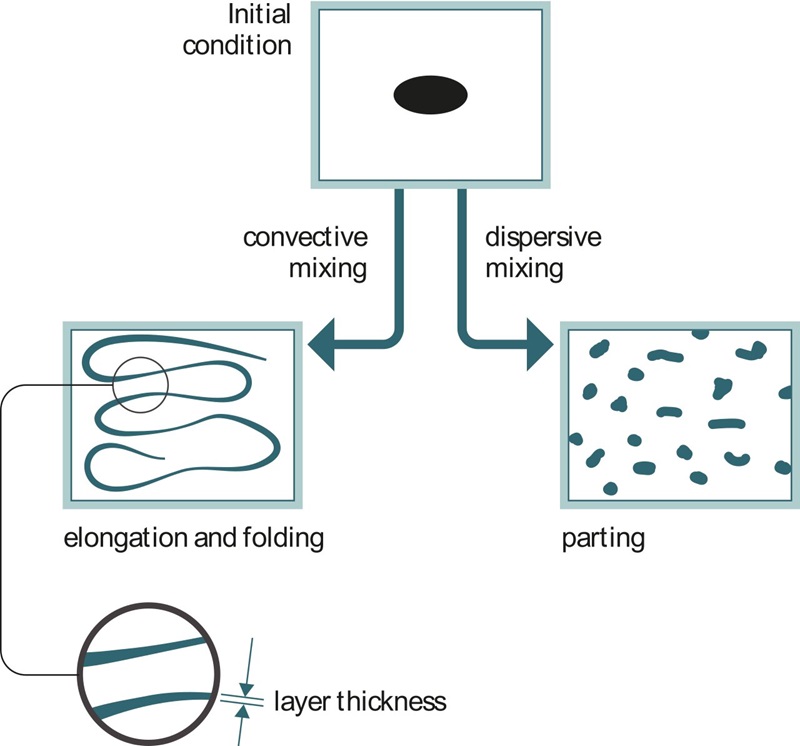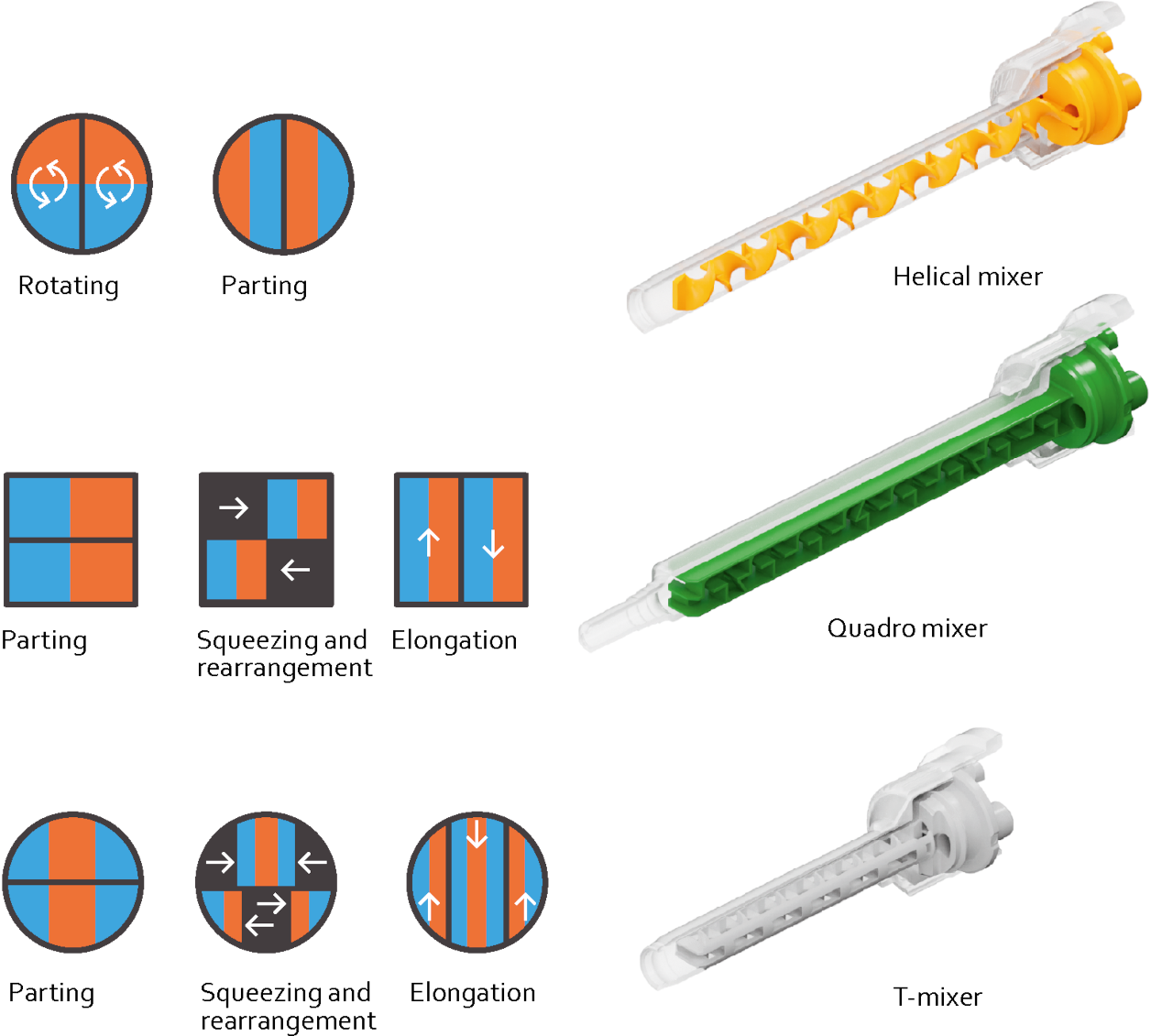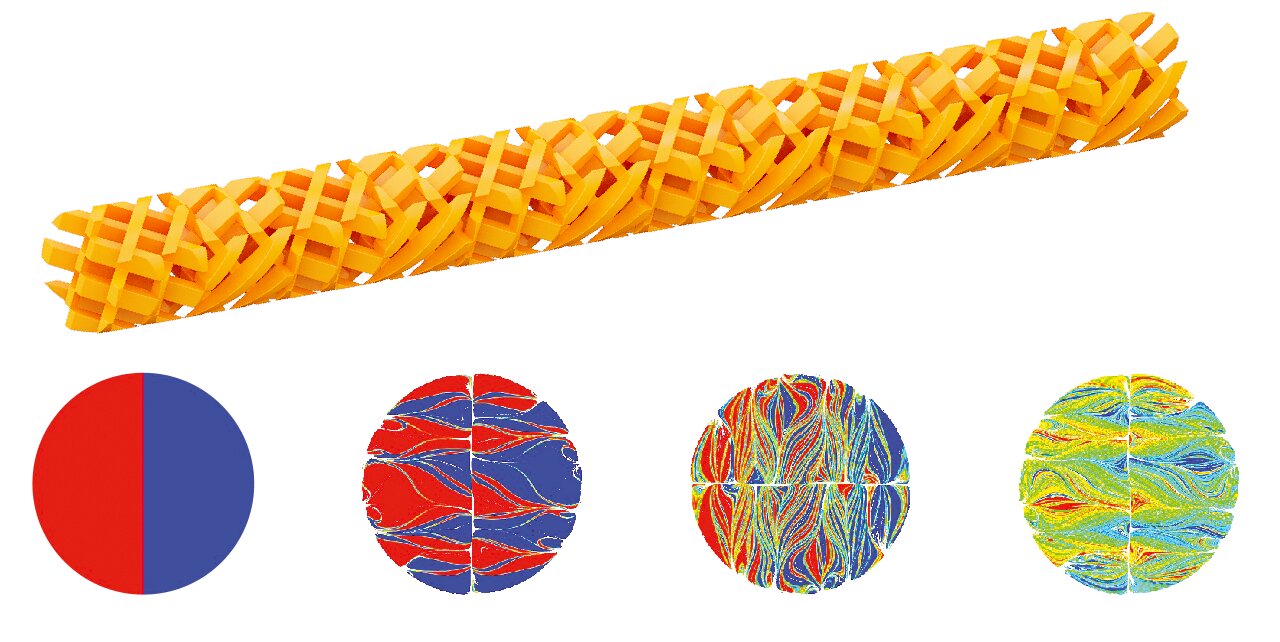Introduction in Mixing Technology
MIXING TECHNOLOGY AT MEDMIX AG – As already mentioned above, two-component adhesives are being used more and more because of their special properties and static mixers are the most frequent choice of device for mixing the two-component material before application.
The advantage of using such mixers is that they mix two-component materials consistently regardless of who is operating them. This means reproducible mixing outcomes and high reliability since they contain no moving parts. The first key factor when it comes to achieving a high level of efficiency is the mixer design and mixing method. However, the interaction between the mixer itself and the rheological properties of the material, the specified mixing ratio and the viscosity ratio of the individual components must also be taken into account.
1.1 Mixing principles in laminar flow regimes
The materials to be mixed for industrial and dental applications are often highly viscous. This high viscosity, combined with a low flow velocity in static mixers, means that a laminar flow regime is always present in static mixers in the intended applications. As shown very nicely in Figure 1, laminar flow means the absence of turbulent eddies, which additionally allow mixing perpendicular to the main flow direction. Therefore, in laminar flow mixing happens by convective and dispersive mixing, only.
 Figure1 - Left: Laminar Flow, Right: Turbulent Flow
Figure1 - Left: Laminar Flow, Right: Turbulent Flow
Convective mixing describes the elongation and folding of the fluid by convective shear forces. Dispersive mixing means the repeating parting of the fluid at the walls of the mixer geometry. A smart mixer geometry combines both processes in an optimal way to generate ever thinner layers of the components. This increases the interfacial area between them. The speed and quality of the curing reaction depends on precisely this size of the interfacial areas and on the relevant concentration gradients.. Due to the close correlation between mixing quality and the course of the chemical reaction, it makes sense to consider the appropriate mixing technology at an early stage in the development of new 2K materials.
 Figure 2 - Illustration of dispersive and convective mixing
Figure 2 - Illustration of dispersive and convective mixing
1.2. How do we implement these principles in medmix mixers?
As a leading supplier of mixing and application solutions for the industrial and dental market, medmix offers a wide range of different mixer types in various sizes. These mixer types and their mixing principles are shown in Figure 3. Typically, the flow and thus the components present are parted in half, then re-oriented by different procedures (rotated in case of Helical mixer, resp. squeezed and rearranged in case of Quadro and T-mixer) and elongated, again. For all mixers shown in Figure 3, the number of theoretical material layers doubles resp. the layer thickness is halved with each mixing element. For example, for a mixer with 12 mixing elements, this ends up with 212 = 4096 material layers which are usually no longer visible to the naked eye. X-Grid mixers provides a different mixing technology. Due to the alternately crossed bars, material is repeatedly fed from the outer wall into the core of the mixer. This avoids unmixed zones and leads to a highly-efficient mixing process. To reach the same mixing quality, X-Grid mixers are therefore generally shorter than equivalent helical mixers.
 Figure 3 - Different mixer designs and their mixing principles
Figure 3 - Different mixer designs and their mixing principles
Based on the material properties (especially viscosity and viscosity ratio), the mixing ratio, and the operating conditions (flow rate, dispensing device) the customer can choose the optimal mixer for his application.
 Figure 4 - x-Grid mixer design and its mixing principle
Figure 4 - x-Grid mixer design and its mixing principle
About the author:
"Joachim Schöck has been working as a senior technology expert at Sulzer Mixpac and medmix Switzerland AG for 12 years. His main activity is the optimization and further development of high-precision application and mixing systems. This is done to a large extent using modern simulation tools such as CFD and FEM. Another focus is on the further development of test methods for predicting the mixing quality of 2K adhesives and sealants."
